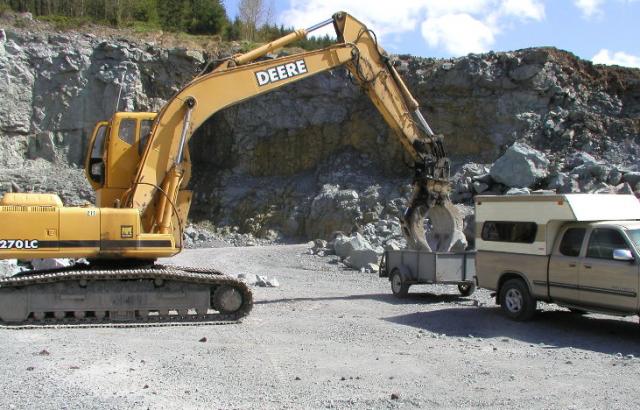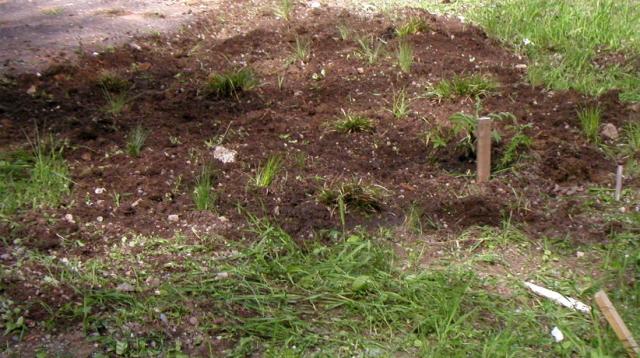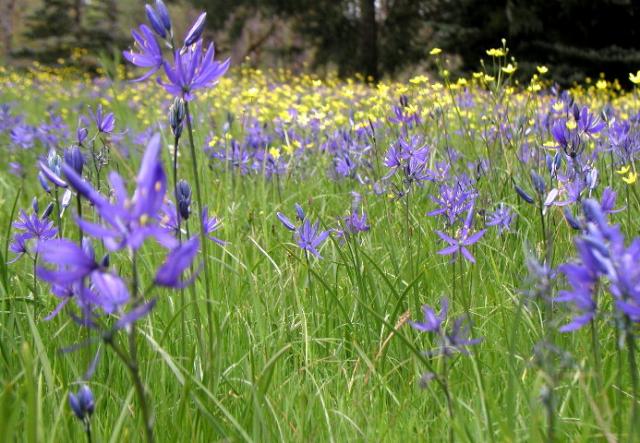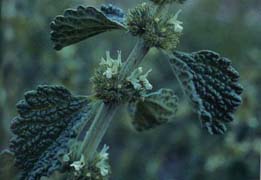Week 2, Project Log #1
Date: April 14th 2007
Time Spent: 3 hours
Activities: I began my session by doing some searching on the internet about the subject of my Longhouse Ethnobotanical Garden Project, Beargrass Savannah and Prairies.
http://southsoundprairies.org/documents/FtLewisFinalReport.pdf [1]
http://www.southsoundprairies.org/index.php [2]
Later in the afternoon, I took my camera and went out to an open prairie near Yelm to take a closer look at the plants growing in that area, and to check on their growth status. I was surprised to see so many blades cut off square as if eaten by wildlife. It is just too cool for the camas to be in full bloom, but soon we shall witness the flash of bright blue color.
Learning: The prairies were important to local human development and were managed by fire. I struggle with this concept from more of a naturalist's point of view as I see it as farming with fire. I am learning to think of the prairies as more than just a grass land, but also a mixture of Garry oaks and other small bushes to comprise savannas.
Total Cumulative Hours: 3 hours
 Springtime on the prairie
Springtime on the prairie
Date: April 18th 2007 Time Spent: 1 hour Activities: Studying the garden. Getting a feel for it and how it lays in relationship with the compass directions. It was a cloudy day but I was still trying to get an understanding of how much light the garden would see each day, how the wind would make the blue camas dance among the bunchgrass, and how the rain might drip silently off the snowberry bushes. Total Cumulative Hours: 4 hours Date: April 21 2007 Time Spent: 4 hours Activities: Longhouse Garden and Synergy I spent most of the afternoon in the garden weeding with John. While we weeded we discussed ways to make improvements in the way the garden looks and grows as a unit. Laura came and shared some information with us that she had learned from her previous experience with the project. My challenge is going to be for me to not get caught up in the landscaping aspect of the garden, but to remember that we are naturalizing an area. One of the most obvious garden pests in our Praire garden is the Automobile. We have some plans to fix that problem very soon, so stay tuned but stand back! John is doing a good job of documenting our progress with photos. The synergy booths were mixed subjects but all rather interesting. The ideals and projects are not new by any means, but they help me understand how we have to keep repeating ourselves over and over as new students prepare to enter the workplace, in hope they will make a difference in how we all live. Week 5, Project Log #4 Date: May 3, 2007 Time Spent: 3 hours I moved a few plugs of buttercups- Ramunculus occidentalis, common camas- Camassia quamash, and fawn lily-Erythronium oreganum from my home prairie patch over to the LHG project prairie garden. After planting the specimens, I tried to spend some time weeding but it rained a great deal in the afternoon. I don’t mind the rain so much, but it was rather cool so I packed up my stuff and headed home. My little camas patch Total Cumulative Hours: 20 hours Week 5, Project Log #4 Date: May 6, 2006 Time Spent: 3 hours Activities: I spent some time today looking over my little patch of prairie for some items that I could transplant, as I am feeling the time for sucessfull transplanting is getting shorter. I dug some comman camas, western butter cup, and shooting starts to take over to the LHG. It was such a quite and peacefull day working on sunday. There were very few people around and the ones that were there seemed to move about as quiletly as they could. Jonh met me at the garden and we spent a little time weeding and dicussing future care for the garden, such as putting some bark on the path that he weeded the other day. Learning: The day was spent relaxing more than learning, even with the weeding. A bald eagle circled overhead as if to inspect the work at the gardens. I spent a little time looking around in the forest noticing a bunch of alum root plants growing at the parking lot edge, and stopping to smell the false solomon's seal, which is just beginning to bloom. Be sure to check it out. Week 6, Project Log #5 Date: May 9, 2007 Time Spent: 3 hours



Date: Saturday, May 12, 2007
Time Spent: 4:30pm-6:30 PM, 2 hours
Partner(s): Tracy, Anna, Allyson, Derek
Activities: After the class on Saturday, several of us went over to the Peterson’s house with some plants that Mrs. Peterson was wanting for her own personal garden space. We were going to leave the plants there, but she decided that it would be best if we would put them in the ground. We planted and watered them, as the weather was quite warm and the plants were beginning to wilt. After returning to the college campus, I met Allyson and Derek. They had brought some bear grass and other plants that needed put in the ground. We were able to get some water with a bucket from the Longhouse kitchen, and water the newly watered plants.Learning: We spent a fair amount of time as a smaller group discussing both our experiences with gardening, plant collecting, and learning in general.
Date: Monday, May 14.
Time Spent: 1 1/2 hour
Partner(s): None
Activities: I went to the garden area really hoping to be able to water the newly plant items. The child proof faucets on the Longhouse made that impossible. The kitchen area was locked as well. I spent some time looking at the plants, and doing some weeding. The thistles and horsetails have such long roots, it’s very difficult to remove them, but my hope is to keep them from going to seed.
Total Cumulative Hours: 29 1/2 hours
Week 7, Project Log #6
Date: May22, 2007
Time Spent: 3 hours.
Activities: I met John at the college campus and we drove down to the Mima Mounds Nature Center. The weather wasn’t the best, but at least it didn’t rain while we were on our walk. Our intention was to identify as may plants as we could and see if there were some species that we should be adding to our wish list for the LHG project. Afterwards we returned to the computer center to work on our final presentation.
Learning: We met a couple of ladies that were taking the nature walk also and when they observed us studying the plants, they began to ask us what each little plant was, and when they learned that we were from the Evergreen State College, it seemed their expectations rose. We lost them on the trail just as soon as it was politely possible. It was pretty interesting to take in the broad view of the site as well. The fir trees are quite large on the boundaries of the nature area, and there are a lot of stumps along the edge where their encroachment has been managed. It doesn’t take any imagination to see that the prairies would have disappeared long ago had they not been managed by fire by the first peoples. There are a lot of Cascara trees growing at the tops of many of the mounds, and the trees are all the same height, indicating that they are the same age. I am wondering how the seeds became so wide spread on just the top of the mounds all during the same period. Was it by wind or possibly by birds?
Total Cumulative Hours: 32 1/2 hours. Date: May 25, 2007
Time Spent: 2 hours
Activities: Today I came to the garden to hand water the newly planted plants that we added during the spring quarter. There were several other students working in the gardens as well, so I did a little weeding while listening to them discuss their plans for a final presentation. It was interesting to get another spin on how to wrap up the project from a group with more members than the prairie group.
Total Cumulative Hours: 34 1/2 hours.
Plans for the remainder of the quarter: I would like to get some more bear-grass, but I am feeling the window for transplanting is closing quickly now that we are getting some hotter days. I will watch the weather and my schedule and see what this week brings.I plan on spending more time researching plants and prairies and possibly make a small list of plants that should be included in the future
Date: May 26, 2007 Time Spent: 2 hours Activities: I decided that I needed to spend more time researching the prairies. Here are some web links that have interesting information about the Puget Sound prairies: 1) http://www.southsoundprairies.org/documents/Indigenousburning.pdf [3] 2) http://www.davidsonia.org/files/17_2_dunwiddie.pdf [4] 3) http://www.wnps.org/plant_lists/counties/thurston/documents/MimaMounds.pdf [5] 4) http://www.wnps.org/plant_lists/counties/thurston/documents/ThurstonCounty.doc [6] Learning: While scanning through these web sites, I found a list of plants native to a specific prairie that we visited, Mima Mounds Natural Area. The list is much more extensive than the one you recieve at the visitors area. Also on the web was a complete plant list of Thurston County that was compiled in 2004 by Don Knoke which contained native and introduced species as well. There was also an article by Linda Storm and Daniela Shebitz called "Evaluating the Purpose, Extent, and Ecologicial Applications of Indigenous Burning Practices in Southwest Washington". The material was a lot like our lecture, and mabye that was one resourse, I guess I should of taken better notes. Total Cumulative Hours: 36 1/2 hours. Week 8, Project Log #7 Date: May 30, 2007 Time Spent: 1 hours Activities: John and I met at the computer center and worked on our final LHG presentation. We returned to the garden to do some watering. Total Cumulative Hours: 37 1/2 hours.
